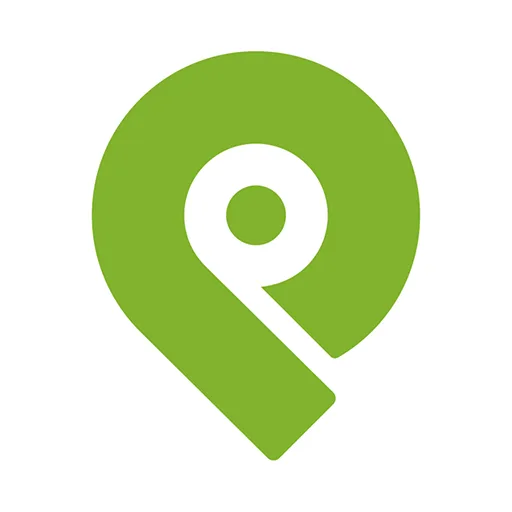In today’s digital age, where social media’s influence is undeniably vast, finding the right tools to manage your online presence can be akin to discovering a treasure map. With a plethora of options available, it’s easy to feel overwhelmed. Enter the titans of the trade: SocialOomph and Post Planner. Both platforms promise to streamline your social media strategy, but which one is the golden ticket to elevating your online game? Let’s dive in and explore how these platforms stack up against each other, ensuring you make an informed decision tailored to your needs.
| SocialOomph | Post Planner |
|---|---|
 |  |
| G2 Score – 3.9 out of 5 stars | G2 Score – 3.8 out of 5 stars |
| TrustRadius Score – Nil | TrustRadius Score – Nil |
Ease of Use: Navigating the Platforms
The First Encounter: User Interface and Setup
Imagine walking into a party. On one side, you have SocialOomph, offering a handshake with its straightforward, no-frills interface. It’s like meeting someone who gets straight to the point. Setting up an account is a breeze, and you’ll find yourself scheduling posts in no time. The platform prides itself on functionality, focusing on what matters most to social media managers: efficiency and reliability.
On the other side of the room is Post Planner, greeting you with a warm smile and a user-friendly vibe. It’s akin to chatting with a friend who makes everything seem easy. The setup process is intuitive, guiding you through each step with helpful tips and visual cues. Post Planner’s interface is not just about looks; it’s designed to make you feel comfortable and in control, turning the daunting task of social media management into a pleasant experience.
Scheduling and Automation: The Heart of the Matter
When it comes to scheduling posts, both platforms step up their game, but they play it differently. SocialOomph is like a Swiss Army knife, offering a wide array of options for automation. You can queue your posts, set them to repeat, and even take advantage of advanced features like post tagging and keyword tracking. It’s the tool you need when your social media strategy involves a complex web of posts across different networks.
Post Planner, however, approaches scheduling with a keen eye on optimization. It’s not just about posting; it’s about posting smartly. The platform offers a unique feature that suggests the best times to post based on your audience’s engagement patterns. It’s like having a personal advisor who knows exactly when your content will hit the mark. Additionally, Post Planner shines with its content discovery feature, which helps you find and schedule content that’s proven to engage your target audience.
The Verdict on Ease of Use
Choosing between SocialOomph and Post Planner on the basis of ease of use boils down to your preference for simplicity versus guidance. If you value a tool that gets the job done with minimal fuss, SocialOomph’s efficient and straightforward approach will appeal to you. However, if you’re looking for a platform that not only manages your posts but also helps you improve your content strategy with actionable insights, Post Planner is the way to go.
Both platforms offer distinct advantages, making the decision a matter of aligning with your personal or business needs. Whether you’re a seasoned social media manager or a small business owner venturing into the digital world, understanding the nuances of each platform can empower you to choose the tool that will best complement your strategy.
Analytics and Reporting: Measuring Success
Diving into Data: The Analytics Overview
After establishing a presence on social media and automating your posts, the next crucial step is understanding the impact of your efforts. This is where the analytics and reporting features of SocialOomph and Post Planner come into play, acting as a mirror reflecting the success and areas for improvement of your social media strategy.
SocialOomph: The Analyst’s Dream
SocialOomph offers a robust suite of analytics tools designed for those who love to dive deep into data. It’s like having a personal detective agency for your social media performance, providing detailed reports on everything from follower growth to engagement rates. The platform allows you to track the performance of individual posts and understand your audience’s behavior over time.
One of SocialOomph’s standout features is its ability to segment data in a way that’s both comprehensive and customizable. You can filter your analytics by date, campaign, or even specific keywords, giving you the flexibility to focus on what matters most to your business. This granular approach to data is invaluable for refining your strategy and making informed decisions about future content.
Post Planner: Simplifying Success
In contrast, Post Planner takes a more streamlined approach to analytics, focusing on simplicity and actionable insights. It’s like having a straightforward conversation about your social media performance, with clear metrics and visual representations making it easy to digest the data. The platform provides an overview of your post’s reach, engagement, and other key performance indicators, highlighting what’s working and what’s not.
What sets Post Planner apart is its emphasis on actionable analytics. The platform not only shows you the numbers but also offers suggestions on how to improve them. For example, if a particular type of content is performing well, Post Planner will recommend more of it. This guidance is especially useful for those looking to enhance their social media strategy without getting bogged down in complex data analysis.
The Verdict on Analytics and Reporting
When it comes to analytics and reporting, the choice between SocialOomph and Post Planner hinges on your approach to data. If you’re the type who thrives on detailed analytics and enjoys dissecting every aspect of your social media performance, SocialOomph’s comprehensive tools will satisfy your inner data geek. Its ability to customize and drill down into the specifics offers a powerful way to optimize your strategy.
On the other hand, if you prefer a more straightforward, less time-consuming approach to analytics, Post Planner will be your ally. Its focus on actionable insights and simplicity makes it ideal for those who want to understand their performance at a glance and quickly implement improvements.
Both platforms recognize the importance of measuring social media success, but they cater to different preferences in how that information is presented and used. Whether you’re a data-driven strategist or a results-focused marketer, choosing the right tool will empower you to not only measure your success but also to build on it.
Content Discovery and Curation: Fueling Your Feed
The Quest for Quality Content
In the sprawling universe of social media, content is king. But not just any content—engaging, relevant, and timely content that resonates with your audience. This is where content discovery and curation become critical components of your social media strategy. Both SocialOomph and Post Planner offer features to help you in this quest, but they do so in different ways. Let’s explore how each platform helps you keep your feed fresh and engaging.
SocialOomph: Automation Meets Customization
SocialOomph takes a more utilitarian approach to content discovery and curation. The platform allows you to automate your content strategy by scheduling posts in advance and recycling evergreen content. This ensures that your social media feeds remain active without constant manual input. However, when it comes to discovering new content to share, SocialOomph relies on you to bring your sources to the table.
The strength of SocialOomph lies in its ability to streamline and automate the sharing of content you’ve already identified as valuable. You can set up keyword-based feeds to automatically post relevant articles or integrate with RSS feeds to share the latest posts from your favorite blogs. This level of automation is a boon for saving time and maintaining a consistent online presence.
Post Planner: Discovery at Your Fingertips
Post Planner, on the other hand, shines brightly in the realm of content discovery and curation. The platform is designed to make finding and sharing engaging content as effortless as possible. With its built-in content discovery engine, Post Planner offers a curated list of articles, images, and posts that are proven to resonate with audiences across various niches.
What makes Post Planner stand out is its “star rating” system, which rates content based on its potential for engagement. This feature takes the guesswork out of content curation, allowing you to select high-quality posts that are more likely to generate likes, shares, and comments. Additionally, Post Planner’s ability to suggest relevant content based on your industry or interests makes it an invaluable tool for keeping your feed filled with fresh and engaging posts.
The Verdict on Content Discovery and Curation
The battle between SocialOomph and Post Planner in the arena of content discovery and curation ultimately boils down to your needs and workflow. If you already have a well-established source of content and need a tool to automate the sharing process efficiently, SocialOomph offers the functionality to keep your social media feeds active with minimal effort on your part.
However, if you’re looking for a platform that not only automates your social media management but also provides a steady stream of engaging content suggestions, Post Planner is the clear winner. Its intuitive content discovery engine, coupled with the ability to predict the engagement level of posts, makes it an indispensable tool for anyone looking to elevate their social media game.
Both SocialOomph and Post Planner offer unique advantages in content management, but your choice should align with your specific goals: whether you prioritize automation and efficiency or the ease of discovering and sharing engaging content.

Related: Check out our free SEO suite

Pricing and Value: Investing in Your Social Media Success
The Cost of Convenience
As with any tool or service, pricing plays a crucial role in the decision-making process. Both SocialOomph and Post Planner offer a range of plans to accommodate different needs and budgets, but understanding the value each platform delivers for its price is key to making an informed choice. Let’s break down the pricing structures of SocialOomph and Post Planner and evaluate the bang for your buck.
| SocialOomph | Personal Suite: Free, offering basic posting features to a limited number of social accounts.Advanced Suite: Starting at $15 per month, which includes access to more social accounts, advanced scheduling options, and productivity features.Professional Suite: Starting at $25 per month, offering even more connections and features designed for professionals and businesses.Business Suite: Custom pricing for businesses needing extensive features and support for a large number of social accounts. |
| Post Planner | Starting at $3 per month (billed annually), designed for individuals, offering up to 3 social accounts and 30 posts per day. At $11 per month (billed annually), for up to 10 social accounts and 100 posts per day, including more advanced features.Starting at $24 per month (billed annually), targeting small businesses, with up to 25 social accounts and 500 posts per day. |
SocialOomph: Flexible Plans for Diverse Needs
SocialOomph offers a tiered pricing model designed to cater to individuals and businesses of all sizes. From a basic free plan with limited features to more advanced plans with a comprehensive suite of tools, SocialOomph ensures that there’s an option for everyone. The premium plans unlock more powerful features such as advanced scheduling options, detailed analytics, and the ability to manage multiple accounts across different social networks.
What sets SocialOomph apart is its flexibility. You can choose a plan that matches your specific requirements, ensuring you’re not paying for features you don’t need. This a la carte approach to pricing can be particularly appealing for users who have a clear understanding of their social media management needs and want to avoid overspending on unnecessary functionalities.
Post Planner: Maximizing Value at Every Level
Post Planner’s pricing strategy is straightforward, offering plans that scale with your social media ambitions. Each plan provides access to a core set of features, including content discovery, scheduling, and analytics, with the price increasing based on the number of posts, social profiles, and team members you can add.
The standout aspect of Post Planner’s pricing is the emphasis on providing value at every tier. Even at the entry-level, users gain access to the platform’s powerful content discovery engine and engagement prediction tools, making it an attractive option for individuals and small businesses looking to make an impact on social media without a significant investment.
The Verdict on Pricing and Value
When comparing the pricing and value offered by SocialOomph and Post Planner, the decision ultimately hinges on your specific needs and how you prioritize features. SocialOomph’s flexible pricing model is ideal for those who require a tailored approach to social media management, offering the ability to pay only for the features you use. Conversely, Post Planner’s structured plans provide exceptional value by including access to its content discovery and curation tools at all levels, making it a cost-effective choice for users who want to enhance their social media content strategy without breaking the bank.
Both platforms offer competitive pricing, but the best choice for you depends on whether you’re looking for customizable flexibility or comprehensive value in your social media management tool. In the end, whether you lean towards SocialOomph for its customizable approach or Post Planner for its curated content prowess, both platforms offer unique strengths that can elevate your social media presence. The key is to assess your priorities—be it detailed analytics, content discovery, ease of use, or pricing—and choose the tool that aligns most closely with your goals and budget.
Customer Support and Community: Navigating the Support Landscape
The Lifeline of Any Platform
In the intricate dance of managing social media, having access to prompt and effective customer support can be the difference between a minor hiccup and a full-blown crisis. Both SocialOomph and Post Planner recognize the importance of support, offering various channels to assist users. However, the quality, responsiveness, and availability of support can vary significantly between platforms. Let’s examine how SocialOomph and Post Planner stack up in the realm of customer support and community engagement.
SocialOomph: Direct and Efficient Assistance
SocialOomph prides itself on providing direct support to its users, primarily through email and a comprehensive FAQ section. The platform aims for efficiency, focusing on resolving user issues with minimal fuss. For those who prefer to find answers independently, SocialOomph’s detailed documentation and FAQs cover a wide range of topics, from basic setup questions to advanced feature guidance.
However, the reliance on email support can be a double-edged sword. While it ensures that inquiries are addressed directly, response times can vary depending on the volume of requests. This approach suits users who prefer detailed, one-on-one assistance and are comfortable with potentially waiting for a response.
Post Planner: Building a Supportive Community
Post Planner takes a slightly different approach to customer support, emphasizing not only direct assistance but also the power of community. Alongside traditional support channels like email, Post Planner encourages users to engage with their vibrant community on social media platforms. This community-centric approach fosters a sense of belonging and provides a platform for users to share tips, ask for advice, and offer support to one another.
Furthermore, Post Planner often hosts webinars and publishes extensive guides and tutorials, aiming to educate users on best practices for social media management. This proactive approach to support not only helps users solve immediate problems but also enhances their overall social media strategy.
The Verdict on Customer Support and Community
Choosing between SocialOomph and Post Planner based on their customer support and community offerings depends on your preferred style of support. If you value direct, one-on-one assistance and are comfortable navigating detailed FAQs and documentation, SocialOomph’s approach will likely meet your needs. The platform’s focus on efficient, direct support ensures that users can get the help they need, albeit with some potential wait times. On the other hand, if you appreciate a more communal approach to support, where you can learn from and interact with fellow users, Post Planner’s emphasis on community engagement and educational resources may resonate more with you. The platform’s commitment to fostering a supportive environment not only provides immediate troubleshooting help but also contributes to your long-term success on social media.
Ultimately, both SocialOomph and Post Planner offer valuable support options, but the choice between them will depend on whether you prioritize direct assistance or the benefits of a community-driven support experience. This exploration of SocialOomph versus Post Planner has covered several critical aspects of social media management tools, from ease of use and content discovery to pricing and customer support. Each platform has its strengths, catering to different preferences and needs. Whether you lean towards the detailed analytics and customization of SocialOomph or the curated content and community focus of Post Planner, the right tool for you is the one that aligns with your social media goals and workflow preferences.
Integration Capabilities: Expanding Your Social Media Toolkit
The Power of Connectivity
In a world where digital tools and platforms are increasingly interconnected, the ability to integrate with other services can significantly amplify your social media management capabilities. Both SocialOomph and Post Planner offer integration options, but the extent and nature of these integrations can greatly affect how well they fit into your existing digital ecosystem. Let’s delve into the integration capabilities of each platform and how they can enhance your social media strategy.
SocialOomph: Seamless Connections with a Broad Spectrum
SocialOomph is known for its robust integration capabilities, offering connections to a wide array of social media networks and digital tools. Beyond the standard fare of major social networks, SocialOomph allows for integration with blogging platforms, RSS feeds, and even email for comprehensive management of your digital presence. This extensive range of integrations is ideal for users who manage a diverse set of platforms and value the ability to centralize their social media efforts in one place.
The platform’s API (Application Programming Interface) also opens up opportunities for custom integrations, catering to businesses with specific needs or those who use proprietary systems. This level of flexibility is a boon for tech-savvy users and organizations looking to tailor their social media management tools to fit their unique workflows.
Post Planner: Focused Integration for Enhanced Content Strategy
Post Planner’s approach to integration is more focused, with an emphasis on enhancing the content discovery and sharing aspects of your social media strategy. While it covers the essential social networks, its standout feature is the integration with content sources and the ability to curate content directly within the platform. This focus ensures that users can easily find, plan, and post engaging content without having to juggle multiple tools or tabs.
Additionally, Post Planner’s integration with image and graphics services enriches the content creation process, allowing users to seamlessly add visual elements to their posts. This streamlined workflow is particularly beneficial for small businesses or individual content creators who need to maintain an active and visually appealing social media presence without investing in multiple content creation tools.
The Verdict on Integration Capabilities
The choice between SocialOomph and Post Planner based on their integration capabilities depends on the breadth of your digital presence and your content strategy needs. If you’re looking for a tool that can serve as a central hub for a wide range of social media and digital platforms, SocialOomph’s extensive integration options make it a compelling choice. Its ability to connect with various networks and services, combined with the potential for custom integrations, offers unparalleled flexibility.
Conversely, if your focus is more on content discovery, curation, and creating visually engaging posts with minimal hassle, Post Planner’s targeted integrations provide a streamlined solution. Its curated content sources and connections with image services simplify the content creation process, making it easier to maintain a consistent and compelling social media presence.
Ultimately, the right tool for you will seamlessly integrate into your existing digital toolkit, enhancing your social media management efforts without complicating your workflow. Whether you prioritize a wide array of integrations or a more focused set of connections, both SocialOomph and Post Planner offer valuable features that can elevate your social media game.
Conclusion
In the vast and ever-evolving landscape of social media management, choosing the right tool can be a pivotal decision for your digital strategy. SocialOomph and Post Planner stand out as formidable options, each with its unique strengths. SocialOomph appeals to those seeking a customizable tool with extensive integrations and robust scheduling options, making it ideal for users with diverse and complex social media needs. On the other hand, Post Planner is perfect for individuals or businesses focused on content discovery and engagement, offering a user-friendly interface and valuable insights into content performance.
Your choice between SocialOomph and Post Planner should hinge on your specific needs—whether it’s the depth of analytics, the ease of content curation, or the flexibility of pricing and support that matters most to you. Ultimately, the best social media management tool is one that aligns with your goals, simplifies your workflow, and empowers you to connect with your audience more effectively.
Read Next
- 31+ Top Social Media Management tools Compared! (2023)
- Allocating Resources: Creating a Comprehensive SEO Budget Plan
- How to Determine the Right SEO Budget for Your Startup
- The Importance of Startup SEO Budgeting for Business Growth
- Using Google Autocomplete for Startup Keyword Insights






















Comments are closed.